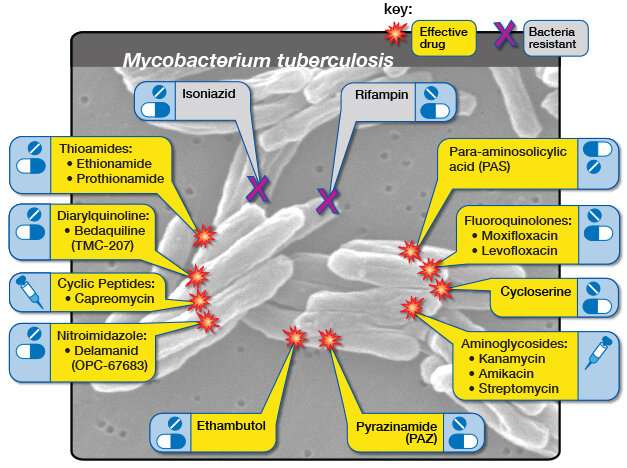Binding iron improves the effect of the anti-tuberculosis drug Bedaquiline

Although tuberculosis, or TB, killed nearly as many people as COVID-19 (approx. 1.8 million) in 2020, it did not receive as much media and public attention. The pandemic has proven that transmissible infection is indeed a global issue. TB remains a serious public health concern in Ireland, particularly with the presence of multi-drug resistant types and the numbers of complex cases here continuing to rise, with cases numbering over 300 annually.
Science tells us that iron is crucial for daily human function, but it is also an essential element for the survival of viruses and bacteria. For some time, scientists have known that depriving infections of iron can limit bacterial burden and help improve patient outcomes.
Now scientists at Trinity College and St James's Hospital have recently applied such a trick (of binding iron to support the immune system) to the treatment of TB, along with a new TB antimicrobial called Bedaquiline. The findings have been published in the prestigious journal, the International Journal of Molecular Sciences.
The research is led by Professor Joseph Keane and Dr. James Phelan.
Bedaquiline has been in use for less than 10 years for multi-drug resistant TB, yet last year Ireland saw its first case of TB that was Bedaquiline-resistant. We know that even as new antituberculosis drugs are introduced, the TB bacteria will become increasingly resistant.
For some time, Dr. Phelan has been looking at how to support the immune system to improve treatment effectiveness. He has previously demonstrated how an iron-binding drug, called Desferrioxamine, or DFX, supports lung immunity against TB infection by driving the activation of a key metabolic pathway called glycolysis. The process of glycolysis helps immune cells make energy to fight infection which in turn drives several signals that improve the patient macrophages' (white blood cells) ability to address TB infection. Recent data has shown that a large fraction of people suffering from TB lack this glycolytic response. DFX could compensate for this metabolic defect.
As an extension of this work, the research team has now demonstrated that immune macrophage cells infected with TB bacteria, and treated with the drug Bedaquiline, do a better job of killing the bacteria, if they are also treated with this iron-binder DFX. In addition, this approach also drives a panel of cytokines, or immune messengers, that could also help the macrophages to eliminate the pathogen.
Dr. James Phelan, Department of Clinical Medicine, Trinity College and Senior Author of the study said: "The use of these antimicrobials has been the mainstay for TB treatment for almost half a century now; now is the time to make these antimicrobials function better for the patient. DFX, and other iron binders, could be one of the answers to this. The use of iron binders could help pave the way for the development of new host-directed-therapies; instead of targeting the pathogen, host-directed-therapies directly target infected cells and help them kill the pathogen. Therefore, the use host-directed-therapies as a treatment strategy could drastically improve the treatment and clinical care for patients suffering with tuberculosis and other devastating infectious diseases."
More information: Christina Cahill et al. The Iron Chelator Desferrioxamine Increases the Efficacy of Bedaquiline in Primary Human Macrophages Infected with BCG, International Journal of Molecular Sciences (2021). DOI: 10.3390/ijms22062938


















